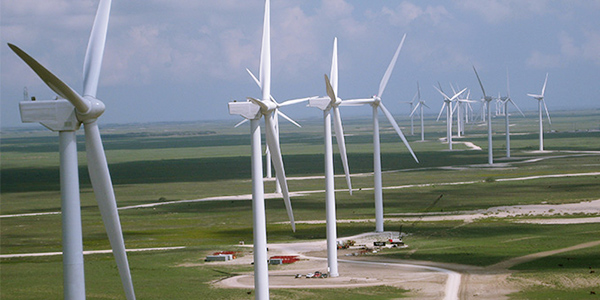By Tom Kleckner
A recent Rice University study that suggests Texas renewable power production could become more reliable by combining different resources and locations did not surprise independent developer Mannti Cummins.
He’s been there and done that, having helped bring the Peñascal Wind Farm project in South Texas online in 2010. The 404-MW facility also happens to be one of the sites used in the Rice study.
“This kind of confirms the rustic logic of common-sense folks who don’t have the ability to do the necessary calculations and analytics,” Cummins said from Mexico, where he is working on another project in Baja California Sur. (See Energy Wildcatter Hopes to Make His Mark in Emerging Mexican Market.)
“This kind of confirms, with an academic methodology, what we’ve all thought is going to be the future,” he said.
In their study, Renewables: Wind, Water, and Solar, Rice researchers Dan Cohan and Joanna Slusarewicz analyzed data from five wind and seven solar sites across West and South Texas. Because of the state’s varying wind patterns and solar irradiance, they found that pairing solar power with either West Texas winds or South Texas winds will increase renewable power production.
West Texas winds peak during early night hours (6-10 p.m.), while South Texas winds tend to follow load patterns and peak in the late afternoon. The researchers said that pairing solar with western wind farms provides the highest levels of firm capacity with an 87.5% threshold, increasing reliable power production on an annual basis.
South Texas’ late-afternoon wind peaks suggest that combining solar with wind “might increase reliable power production over the course of a summer day during hours of high demand,” they wrote.
Cummins said the Peñascal development team in the early 2000s chose the barren scrub of South Texas because the wind peaks at the right time. “It’s just perfect with the load profile,” he said.
The Peñascal site is also situated between the Corpus Christi and Rio Grande Valley population centers, where it could take advantage of under-used transmission facilities without taking part in the state’s Competitive Renewable Energy Zones process. (The wind farm did benefit from more than $220 million in federal stimulus funds.)
“But nobody ever thought about pairing [wind] with solar,” Cummins said. “You can start talking about it because [solar is] economical.”
He said that prices for installed solar are 50% below where they were three years ago, dropping from $2,000/kW to $900/kW. Solar is crushing natural gas, Cummins said, a situation he expects to continue as battery storage becomes more commonplace.
“As the price of battery storage drops like a rock, that’s the future,” he said.
Cummins is following that concept of wind-integrated solar energy with his Coromuel project at the tip of the Baja California peninsula. The 50-MW wind facility, named for the local weather phenomenon, will include 600-kV solar panels at the foot of each turbine.
“When the wind has its own name, it’s probably consistent enough for wind generation,” he said, comparing the afternoon peak to South Texas winds.
“The rise of clean energy appears to be everywhere across Texas,” said developer John Billingsley in a statement following the Rice study’s release. Billingsley is CEO of Global Energy and also launched Sunfinity Renewable Energy three years ago.
Billingsley agrees with Rice’s Cohan, who said the research shows “nowhere else in the world [is] better positioned to operate without coal than Texas is.”
As it is, coal only accounts for 15.5 GW of ERCOT’s existing resources, with wind and solar combining to account for 22 GW. No coal projects are listed in the ISO’s latest generator interconnection report, while there are 14.3 GW of wind, 4.3 GW of solar and 2.7 GW of gas projects with signed interconnection agreements.
During a recent appearance in Houston, ERCOT CEO Bill Magness said, “It’s all gas, wind and solar. There are no other resources coming along.”
ERCOT expects to have as much as 5 GW of solar energy on the system by 2021, much of it in West Texas.
“We’ve only begun to scratch the surface in terms of truly harnessing our clean, renewable resources,” Billingsley said. “The next several years will see amazing strides forward.”





